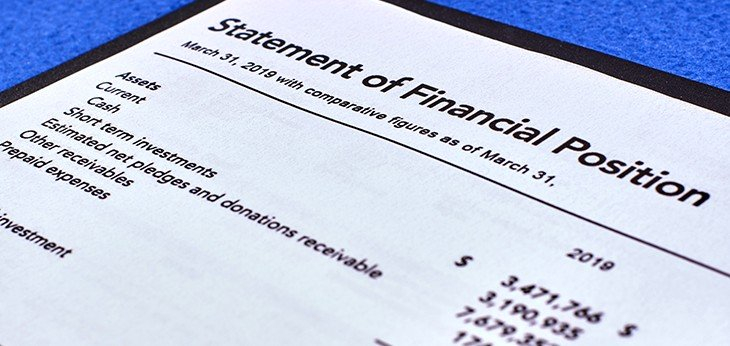When analysing your organisation’s financials it can be easy to get caught up in an array of numbers and hard to know the financial health of your organisation. Key financial ratios can help you focus in on particular financial areas and highlight any potential risks that may be present.
The three ratios below highlight keys areas that all organisations should know and monitor. These three ratios and categories help indicate the financial status of an organisation and can be used to very quickly assess financial health.
The three ratios and categories are:
1. Liquidity
The term liquidity refers to the ease in which an asset can be bought or sold in the market, with cash being the most liquid asset.
In the context of financial health, we want to know if an organisation has the resources available to pay its bills and meet its upcoming financial obligations as they become due.
Upcoming bills and commitments that need to be met in the next 12 months (and usually in the next three months) will sit on the balance sheet under Current Liabilities. Current Liabilities may include accounts payable, accrued wages and PAYG to be paid.
Conversely liquid assets such as cash and accounts receivables will sit on the balance sheet under Current Assets.
Current Ratio
(Current Assets / Current Liabilities)
For example an organisation with Current Assets of $1.75m and Current Liabilities of $1.1m will have a Current Ratio of 1.59.
The Current Ratio (sometimes referred to as the liquidity ratio) simply compares Current Assets to Current Liabilities to highlight an organisation’s ability to meet its financial commitments.
A ratio of less than one indicates that the organisation does not have sufficient cash and/or liquid assets to meet its upcoming financial obligations and may be trading while insolvent.
2. Cash Reserves
Although every organisation is different, there is a strong argument that all organisations should have a level of cash reserves.
If liquidity refers to meeting known, upcoming financial obligations – cash reserves refers to preparing for the unknown and/or planned future spending.
Cash reserves will soften the impact of adverse effects. If a key customer is lost or grant not renewed, cash reserves can allow for business to continue as normal for a period of time whilst the organisation recovers.
The level of cash reserves that an organisation should hold is not a straightforward answer. It depends on your revenue model, operating costs, employee commitments and risks, alongside other factors. It is not possible to give standard formula for all organisations. Holding a level of cash reserves is almost always a good thing, but an absolute dollar value is meaningless given how varied organisations are in size and risk exposure. For example $200k in cash reserves may sound good but if the organisation has a monthly payroll of $120k then this may be well below what the organisation requires.
Month Ratio
[ (Current Assets – Current Liabilities ) / (Total Expenses less non cash items such as depreciation) ] x 12
The month ratio highlights the number of months of cash currently available to cover expenditure. For example an organisation with Current Assets of $1.75, Current Liabilities of $750k and total expenses excluding depreciation of $300k, would have a month ratio of 3.33 months.The preferred number will be highly personal to the organisation at hand and organisations should consider their business model and funding profile.
3. Sustainability
An organisation that lives beyond its means and continues to make a loss is clearly not sustainable. On the opposite end of the spectrum, an organisation that earns more than it spends will be able to build cash reserves that can be used to mitigate risk, invest in infrastructure or revenue-generating activities, or increase its spend on its social objectives.
Net Surplus Margin
(Net Surplus / Total Revenue) x 100
The net surplus margin, commonly referred to as the net profit margin, is expressed as a percentage and tells us how many cents are left over for the organisation for every dollar of revenue earned.
For example an organisation with a Net Surplus of $5,300 and total revenue of $1m would have a Net Surplus Margin of 5.3%. This indicates that for every dollar of revenue earned, 5.3 cents is left over, after all expenses are paid, and this can be used by the organisation to build cash.
A net loss will of course produce a negative number and this may indicate that the organisation is operating in an unsustainable manner.
An organisation will want to achieve the highest possible net surplus margin whilst also achieving its social objectives.
To summarise, when next reviewing a set of financials ask yourself the following questions:
- Can the organisation meet its upcoming financial obligations?
- Does the organisation have sufficient cash reserves?
- Is the organisation living within its means?






